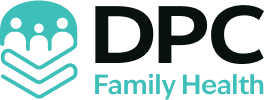“What’s one strategy you’ve employed to manage multiple family members’ different health needs simultaneously? How has this improved overall family health management?”
Creating a centralized health calendar and tracking system — either digital or physical — that keeps appointments, medications, and care plans in one place.

Strategy: The Centralized Family Health Hub
I used a shared digital calendar (like Google Calendar) and a color-coded spreadsheet to track:
Doctor and specialist appointments
Prescription refill dates
Lab results and follow-ups
Dietary needs and restrictions
Insurance details and medical history
Each family member had a dedicated tab or color. Reminders were set in advance for appointments, and I kept notes from each visit in a shared document or app (like Evernote or Notion).
How It Helped:
Reduced missed appointments and last-minute scrambles
Improved communication between caregivers, especially when coordinating elderly parents’ care
Allowed for proactive health decisions (e.g., aligning vaccinations or scheduling screenings)
Helped spot patterns — like recurring symptoms or side effects — that led to better-informed doctor visits
Marc Bromhall, Founder, Dentist Hub
Creating a centralized, shared health calendar

One effective strategy I’ve used to manage the diverse health needs of multiple family members is creating a centralized, shared health calendar. This digital calendar tracks each person’s appointments, medication schedules, and important health milestones, allowing everyone to stay organized and informed. By combining this with regular family check-ins, we ensure that each member’s unique needs are addressed proactively.
Dr. Ryan Peterson, Board Certified Physician, NuView Treatment Center
Focus on streamlining care using shared access and simple scheduling

I focus on streamlining care using shared access and simple scheduling. Every family member has different needs. One might need regular therapy, another consistent follow-ups with a pain management specialist, and someone else may require cannabis-related consultations. I organize all appointments in a central calendar with reminders, so no one misses care. We use virtual visits when possible to reduce the burden of travel and waiting rooms. Digital access to medical records helps track prescriptions and treatment plans without guesswork.
I also prioritize communication across providers. If one member starts a new medication, I make sure every relevant practitioner is informed. That reduces overlap and avoids adverse reactions. Everyone in the household follows a basic intake and symptom log. This makes it easier for practitioners to spot patterns early. The result is fewer emergency visits and less confusion. Health stops feeling like a crisis and starts becoming a routine. When care becomes routine, stress lowers and outcomes improve. Managing care across a family means controlling time and information. When those two things stay organized, you get better care, fewer surprises, and more energy for what matters.
Aspen Noonan, CEO, Elevate Holistics
Creating a shared digital health calendar

One strategy I’ve used to manage multiple family members’ health needs is creating a shared digital health calendar. I add doctor appointments, medication schedules, and wellness check-ins for everyone, making sure there are no overlapping appointments or missed doses. This helps me keep track of everyone’s health in one place.
For example, when my daughter needed regular physical therapy sessions, I synced those with my own medical appointments, ensuring we didn’t have scheduling conflicts. Having everything organized in one spot also makes it easier to spot patterns, like when we might need to schedule additional checkups or screenings. This approach has greatly reduced the mental load of managing health for everyone and improved communication about who needs what care. It’s saved time, reduced stress, and kept our family’s health on track without feeling overwhelmed by constant reminders or disorganization.
Nikita Sherbina, Co-Founder & CEO, AIScreen
A shared digital calendar for medical stuff, appointments, meds, and diet plans

One strategy I’ve used to manage my family’s health needs is a shared digital calendar for medical stuff, appointments, meds, and diet plans. With my mom’s diabetes, dad’s heart meds, and my boxing injuries, I plug everything into Google Calendar with alerts. Color-code each person’s needs, like retreat schedules. It cut missed doses by half and keeps us on track, like vetting a retreat for safety. Everyone’s clearer on their health plan, stress dropped, and we’re proactive, not reactive.
Chris Brewer, Managing Director, Best Retreats

